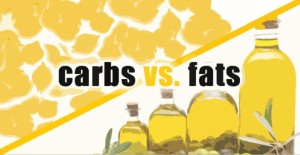Dietary Energy as Carbs

I recently published a blog that examined published data on growth performance of pigs when fed equal amounts dietary energy. I want to go one step further to analyze the cost and answer this question:
Is supplying energy as soy oil economically justified when compared to energy supplied as finely-ground corn?
This analysis used two extremes, 2 vs. 3.74% soy oil in the diet. In the 2% oil diet, the corn was ground to 339 micron particle size (very fine and provided more metabolizable energy); at 3.74%, the particle size of corn was 865 micron. Pigs were fed from 32-135 kg with unchanged body weight. Feed intake was lower when the diet contained 3.74% soy oil, as shown below by the total amount of feed consumed to get to 135 kg body weight.
Higher oil content created a benefit of 17 kg less feed consumed, but this does not tell the whole story.
Various ingredients consumed show a different picture (see below) with more information.
In a 2% soy oil diet, the graph shows 6 kg more soy oil was consumed in the 3.74% diet compared to a 2% diet. These costs must be considered for comparison purposes. On the other hand, corn, solvent-extracted soybean meal (SBM), and other ingredients were consumed at lower amounts with the 3.74% soy oil diet – these are all savings associated with that diet. For example, nearly 19 fewer kg of corn was required in that diet because the percentage of corn is slightly lower in the higher oil diet and the pigs consumed less total feed.
When we put in ingredient costs this picture (see below) emerges:
The bar on the left is the extra costs of feeding more soy oil (about $4 per pig), the bar on the right is the savings of feeding less corn, solvent-SBM (about $3.32 per pig). The savings with reduced feed intake makes up most of the increased costs of soy oil.
Listed above this savings bar are other costs which makes the 2% soy oil diet (with finely-ground, 339 micron corn) more expensive. Fine grinding requires more energy and the hammers of a hammermill will wear out faster. Without careful diet formulation, pigs can get ulcers with finely-ground corn. Most of these costs are not easily quantified, but are very real.
As mentioned in a previous blog, another approach is to use high-quality ingredients, such as extruded, expelled soy meal, which has valuable residual soy oil within the meal. This changes our analysis because extruded, expelled soy meal supports increased animal performance versus commodity, solvent-extracted soybean meal (see here and here). Remember in this analysis, body weights were the same at the beginning and the end – feed intake was lower.
In conclusion, human demand for dietary animal protein may very well increase for decades to come, and therefore, whole-system analyses like this will become increasingly important – if for nothing else, to identify gaps in critical knowledge. Please contact myself about details in this blog post, or myself and Dr. Nabil Said about optimizing your process.






